
Fundamentals
The Hair Oil Chemistry, within Roothea’s ‘living library,’ refers to the foundational understanding of how oils interact with hair strands, particularly those with textured patterns. This involves delving into the molecular composition of various botanical oils and how these components engage with the hair’s intricate structure. It’s a scientific inquiry, yes, but one that gains profound resonance when viewed through the lens of ancestral practices.
At its core, Hair Oil Chemistry explains the physical and chemical actions that occur when oils are applied to hair. This includes their ability to penetrate the hair shaft, coat the cuticle, reduce water loss, and deliver beneficial compounds. The purpose is to clarify how these interactions contribute to hair health, strength, and appearance.
Understanding this chemistry is not merely an academic exercise; it provides a framework for appreciating why certain traditional hair oiling practices, passed down through generations within Black and mixed-race communities, have been so remarkably effective. It offers a scientific validation for the wisdom of our foremothers.

The Hair Strand’s Architecture and Oil’s Role
A single hair strand, a testament to nature’s artistry, is composed primarily of keratin proteins. This protein forms the cortex, the central fibrous part, encased by an outer layer of overlapping scales known as the cuticle. The shape and arrangement of these cuticles, along with the overall helical structure of the hair, differ significantly in textured hair, often leading to more points of vulnerability and a greater propensity for dryness.
Hair Oil Chemistry reveals the silent, molecular dance between botanical oils and the unique architecture of textured hair, echoing ancient wisdom in every interaction.
When oils are applied, they engage with this structure in various ways:
- Penetrating Oils ❉ Some oils, like Coconut Oil, possess a molecular structure, specifically a low molecular weight and linear conformation due to their lauric acid content, that allows them to penetrate the hair shaft. This deep permeation can help reduce protein loss and strengthen the hair from within.
- Sealing Oils ❉ Other oils, often those with larger molecular structures or higher concentrations of certain fatty acids, tend to form a protective film on the hair’s surface. These ‘sealing’ oils help to lock in moisture, reduce hygral fatigue (the damage caused by repeated swelling and shrinking of hair as it gets wet and dries), and provide a physical barrier against environmental stressors.
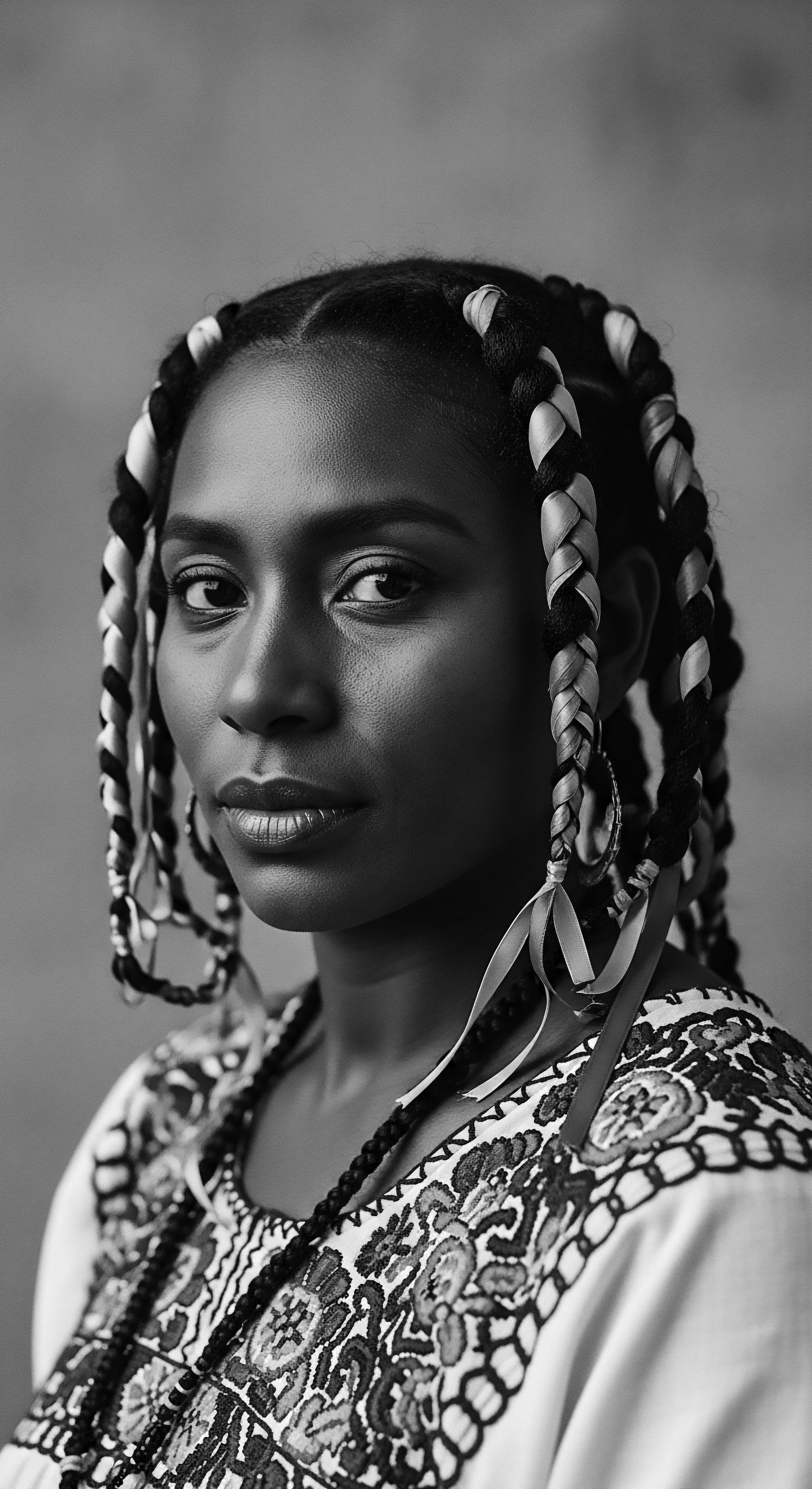
The Elemental Components of Hair Oils
The true definition of Hair Oil Chemistry lies in the molecular constituents of the oils themselves. These natural elixirs are complex mixtures of:
- Fatty Acids ❉ These are the primary building blocks of oils. Different fatty acids, such as lauric, oleic, stearic, and linoleic acids, contribute to an oil’s texture, its ability to penetrate, and its beneficial properties. For instance, the high oleic acid content in Argan Oil has been noted for its potential sebostatic (sebum-regulating) effect.
- Vitamins ❉ Many traditional oils are rich in vitamins, particularly A and E, which act as antioxidants. These vitamins support scalp health and protect the hair from environmental damage.
- Plant Sterols and Phenolic Compounds ❉ These bioactive substances found in oils like Shea Butter contribute to their anti-inflammatory and antioxidant properties. They offer a shield for the hair and scalp, aligning with the holistic wellness approach of ancestral practices.
The selection of oils in traditional hair care was often guided by generations of observation and empirical knowledge, long before the advent of modern chemical analysis. These ancestral practices, while perhaps not articulated in scientific terms, intuitively understood the beneficial interactions that Hair Oil Chemistry now clarifies.

Intermediate
Moving beyond the basic understanding, the intermediate exploration of Hair Oil Chemistry deepens our appreciation for its cultural resonance, particularly within the vast and varied landscape of textured hair heritage. Here, the scientific principles intertwine with the wisdom of the ages, revealing how ancestral communities intuitively harnessed these chemical properties for holistic hair wellness and communal bonding. The significance of this knowledge is not merely about ingredients; it speaks to the profound connection between hair, identity, and the enduring practices that sustained communities.

Ancestral Alchemies ❉ Oils as Cultural Pillars
For generations, long before laboratories and chromatographs, Black and mixed-race communities across the globe recognized the profound benefits of natural oils for their hair. These oils were not simply cosmetic; they were deeply embedded in daily life, spiritual practices, and communal rituals. The meaning of Hair Oil Chemistry, in this context, expands beyond molecular structures to encompass cultural preservation and resilience.
Consider the widespread reverence for Shea Butter (Vitellaria paradoxa), known as ‘nkuto’ in Twi or ‘òrí’ in Yoruba. This fatty oil, extracted from the nuts of the shea tree, which flourishes across the sub-Saharan savannah belt, has been a cornerstone of West African hair and skin care for centuries. Its chemical composition, notably rich in stearic and oleic acids, along with a significant unsaponifiable fraction containing bioactive substances, explains its emollient, moisturizing, and anti-inflammatory properties. These qualities made it ideal for conditioning textured hair, which often requires robust moisture retention due to its structural characteristics.
The historical application of oils to textured hair transcends mere aesthetics, serving as a testament to ancestral ingenuity in preserving hair health and cultural identity.
Similarly, Palm Kernel Oil, often referred to as ‘Adwengo’ in Ghana, has been traditionally used for hair growth and scalp health. Its high percentage of lauric acid makes it a notable substitute for coconut oil in certain applications, providing deep nourishment. These traditional methods of oil extraction and application, often involving roasting the kernels, were not just about creating a product; they were communal acts, reinforcing social bonds and transmitting generational knowledge.
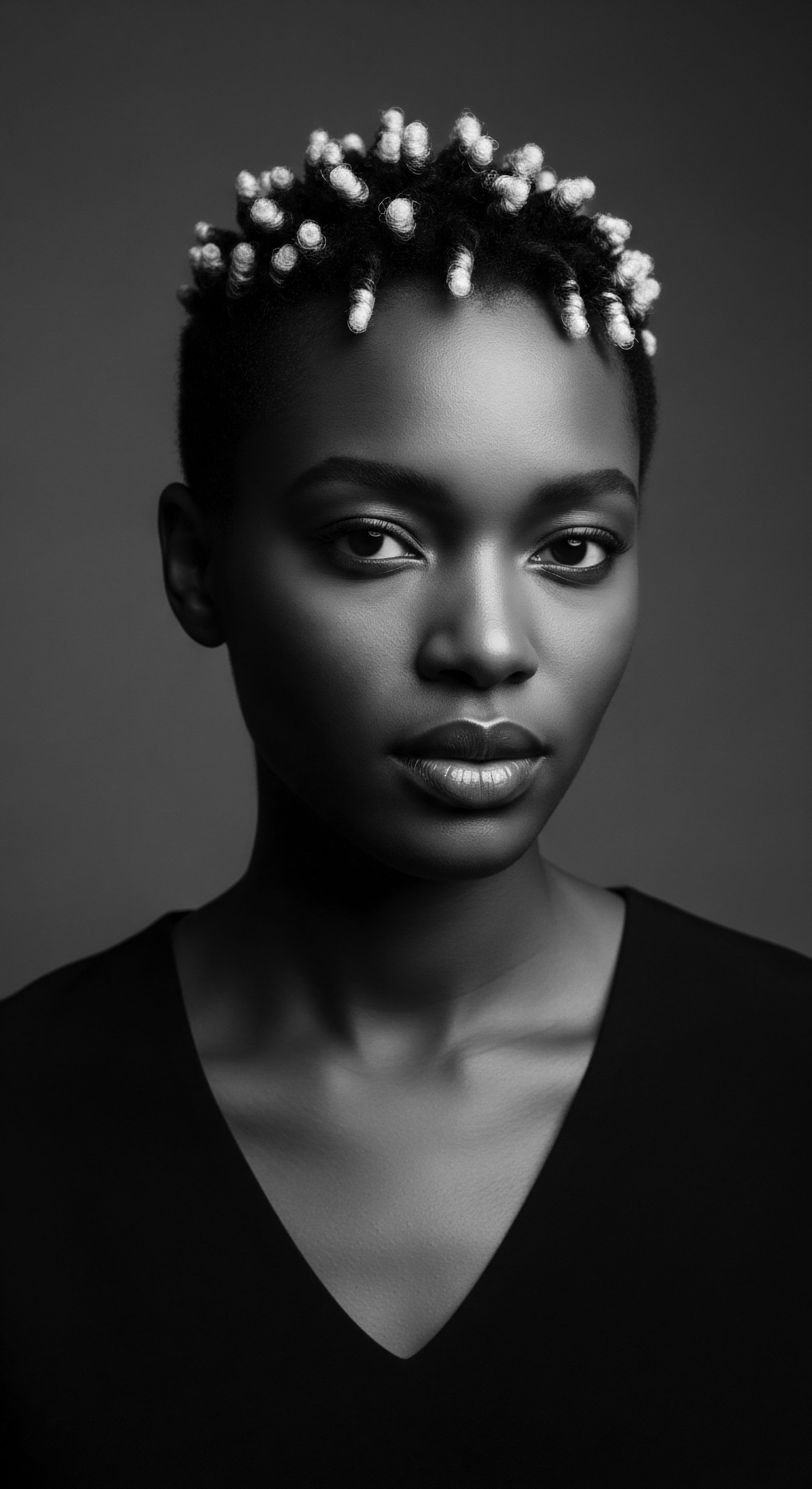
The Interplay of Structure and Absorption in Textured Hair
The distinctive morphology of textured hair—from loose waves to tight coils and kinks—presents unique considerations for Hair Oil Chemistry. Unlike straight hair, the coiled pattern of textured strands means that the scalp’s natural oils, sebum, often have a longer, more circuitous journey to reach the mid-lengths and ends, leading to increased dryness. Furthermore, the cuticle cells in curlier hair types may not lie as flat and tightly packed, potentially making textured hair more porous and less able to retain moisture effectively.
This inherent characteristic underscores the importance of external oil application. A study examining the penetration of vegetable oils into textured hair fibers, using advanced techniques like MALDI–TOF analysis, found that oils like argan, avocado, and coconut oil could indeed enter the hair cortex. While the study noted that oil treatments did not significantly alter the mechanical properties of textured hair in tensile tests, it did suggest a lubrication effect in virgin hair, which could contribute to increased resistance to fatigue. This nuanced scientific insight helps explain the empirical benefits observed in traditional practices, where oils provide a protective coating and reduce friction, thereby minimizing breakage for fragile textured strands.
The application methods themselves are also steeped in cultural meaning. Hair oiling, often involving warm, herbal-infused oils massaged into the scalp and hair, has been a holistic approach to hair health in many cultures for millennia. This practice stimulates blood circulation, nourishing hair follicles and fostering a healthy scalp environment.
| Oil Type Shea Butter (Vitellaria paradoxa) |
| Cultural Origin/Significance West and East Africa (e.g. Ghana, Nigeria) |
| Traditional Uses for Hair Moisturizing, softening, protective sealant, scalp soothing |
| Chemical Properties/Benefits (Intermediate Understanding) Rich in stearic and oleic acids; significant unsaponifiable fraction provides anti-inflammatory and antioxidant benefits. |
| Oil Type Palm Kernel Oil (Elaeis guineensis) |
| Cultural Origin/Significance West Africa (e.g. Ghana, Nigeria) |
| Traditional Uses for Hair Hair growth promotion, breakage prevention, scalp health, shine |
| Chemical Properties/Benefits (Intermediate Understanding) High in lauric acid, similar to coconut oil, allowing for deep nourishment; contains Vitamin E and omega-3 fatty acids. |
| Oil Type Coconut Oil (Cocos nucifera) |
| Cultural Origin/Significance South Asia, Pacific Islands (e.g. India, Samoa, Philippines) |
| Traditional Uses for Hair Reduced protein loss, moisture retention, shine, scalp conditioning |
| Chemical Properties/Benefits (Intermediate Understanding) Lauric acid (saturated fatty acid) allows for penetration into the hair shaft, reducing protein loss. |
| Oil Type Castor Oil (Ricinus communis) |
| Cultural Origin/Significance Ancient Egypt, Haiti, India |
| Traditional Uses for Hair Hair hydration, shine, potential for thicker hair |
| Chemical Properties/Benefits (Intermediate Understanding) Contains ricinoleic acid, a unique fatty acid that may contribute to its sealing and moisturizing properties. |
| Oil Type These oils represent a fraction of the botanical wisdom passed through generations, each offering distinct advantages rooted in their unique chemical makeup and traditional application. |
The intermediate understanding of Hair Oil Chemistry, therefore, connects the observable benefits of traditional hair care to their underlying scientific explanations, always honoring the deep historical roots of these practices. It reveals how communities, through centuries of careful observation, developed sophisticated methods of hair care that were, in essence, applied chemistry, tailored to the specific needs of textured hair.
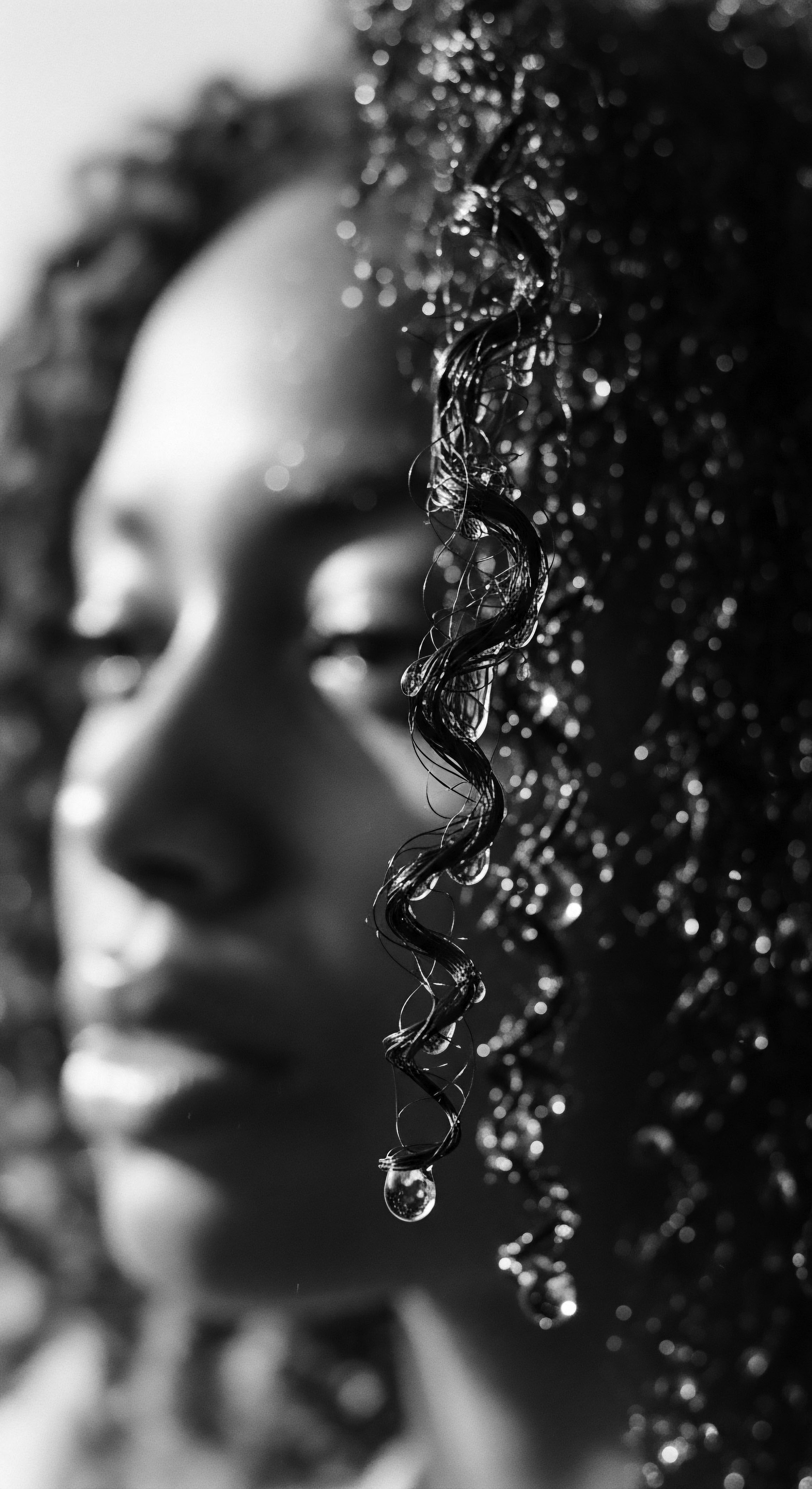
Academic
The academic exploration of Hair Oil Chemistry transcends mere definition; it is a rigorous inquiry into the complex interplay of botanical compounds, hair morphology, and the profound cultural and historical narratives that have shaped the application and understanding of oils for textured hair. This scholarly perspective demands a meticulous examination of how specific molecular structures within oils exert their influence on the keratinous matrix of the hair shaft, particularly given the unique architectural characteristics of coils, curls, and kinks. The meaning here is multi-layered, encompassing not only the biophysical mechanisms but also the socio-historical contexts that have rendered hair oils indispensable within Black and mixed-race hair traditions.
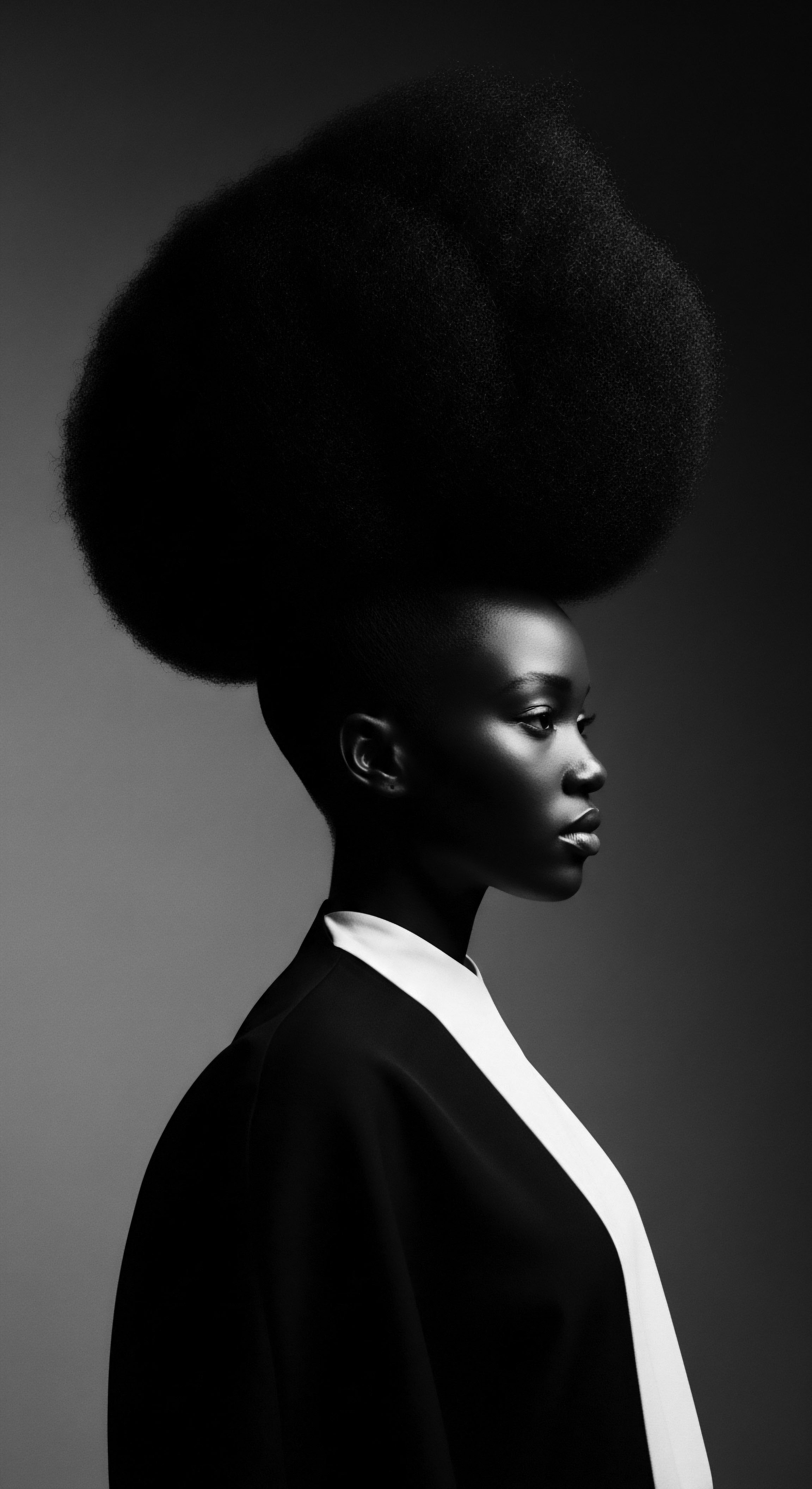
The Biophysical Dynamics of Oil-Hair Interaction
Hair Oil Chemistry, from an academic standpoint, precisely delineates the molecular interactions between various lipids and the hair fiber. The efficacy of an oil hinges significantly on its fatty acid profile, which dictates its ability to penetrate the cuticle and cortex. Oils predominantly composed of saturated and monounsaturated fatty acids, such as Coconut Oil with its high lauric acid content, demonstrate a greater capacity for permeation. This penetration is critical for reducing protein loss, a phenomenon often exacerbated in textured hair due to its structural vulnerabilities and higher propensity for mechanical stress.
Conversely, oils rich in polyunsaturated fatty acids tend to remain on the surface, acting as occlusive agents. This surface film minimizes transepidermal water loss from the scalp and reduces hygral fatigue, a cyclical stress induced by water absorption and desorption that can weaken the hair fiber over time. The dual action of penetrating and sealing oils, often employed synergistically in traditional practices, underscores an empirical understanding of lipid chemistry long before its formal scientific articulation.
Research utilizing advanced analytical techniques, such as Matrix-Assisted Laser Desorption Ionization Time-of-Flight (MALDI–TOF) analysis, has provided empirical evidence of oil penetration into the hair cortex. One study, for instance, indicated the presence of argan, avocado, and coconut oil components within the cortex of bleached textured hair. While the mechanical tests in this particular study did not show a statistically significant improvement in tensile strength of textured hair with oil treatments, it is worth noting that the intricate nature of hair–oil interactions means that benefits may manifest in other ways, such as reduced friction or enhanced lubrication, which could mitigate damage over time. The nuanced understanding of Hair Oil Chemistry necessitates acknowledging these complexities, moving beyond simplistic cause-and-effect relationships to appreciate the holistic impact of oiling practices.
Academic inquiry into Hair Oil Chemistry unveils a sophisticated dialogue between molecular composition and hair structure, revealing how ancestral practices often mirrored advanced scientific principles in their pursuit of hair vitality.
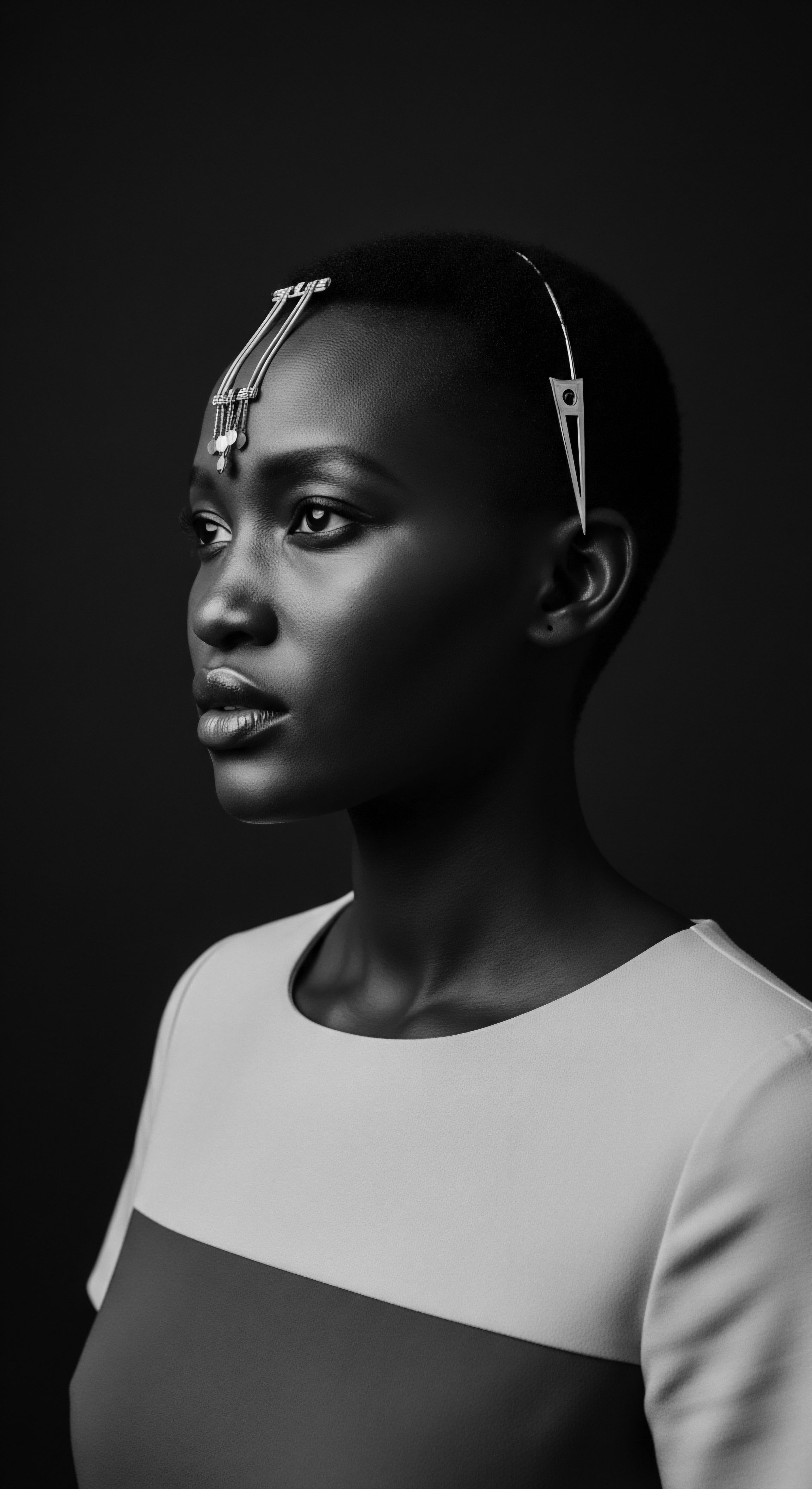
The Ancestral Imperative ❉ Hair Oil Chemistry in Diasporic Lived Experience
Beyond the laboratory, the academic meaning of Hair Oil Chemistry is inextricably linked to the cultural continuity and self-determination of Black and mixed-race communities. For these groups, hair care, particularly the use of oils, has never been a mere cosmetic routine; it has been a profound act of identity, resistance, and healing. The systematic disruption of traditional hair practices during the transatlantic slave trade, where enslaved Africans often had their heads shaved as a means of dehumanization, serves as a stark historical backdrop. In the face of such brutal erasure, the persistence and adaptation of hair oiling rituals became a powerful assertion of self and heritage.
Consider the profound insights offered by Dr. Yaba Blay in her work, such as One Drop ❉ Shifting the Lens on Race. While not directly about hair oil chemistry, Blay’s scholarship illuminates how racial identity, particularly for Black individuals, has been historically constructed and continues to be navigated. The “one-drop rule,” which legally defined anyone with any known Black African ancestry as Black, profoundly shaped self-perception and communal practices.
In a society that often devalued Blackness, the meticulous care of textured hair, often through oiling, became an act of defiance and self-love. This practice, therefore, is not merely about preventing dryness; it is about reclaiming agency, preserving ancestral ties, and nurturing a visual manifestation of identity that refused to be erased. The deliberate application of oils, passed from grandmother to mother to child, became a tangible connection to a lineage of resilience and beauty.
This historical context provides a critical lens through which to examine the contemporary significance of Hair Oil Chemistry. The re-emergence of natural hair movements, particularly within the 21st century, is a powerful demonstration of this cultural re-centering. As more Black women embrace their natural hair textures, the practices of hair oiling, deep conditioning, and protective styling—all intrinsically linked to Hair Oil Chemistry—are celebrated as acts of self-acceptance and a reaffirmation of African cultural symbols. The chemistry, then, becomes a tool for understanding and enhancing these acts of self-definition, bridging the gap between ancient wisdom and modern scientific validation.
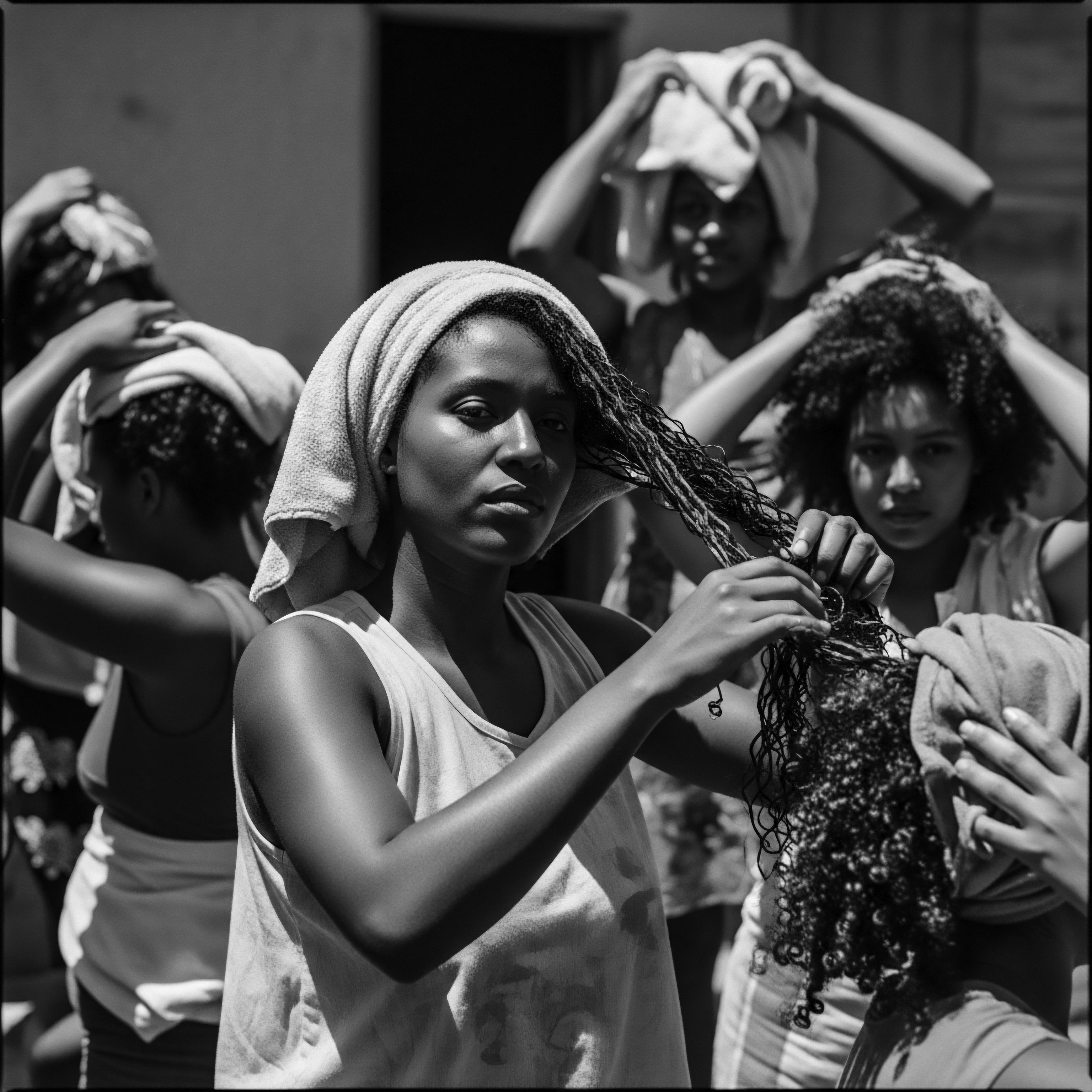
Hair Oil Chemistry in Global Diasporas ❉ Case Study of Haitian L’huile Mascreti
A compelling case study in the intersection of Hair Oil Chemistry and textured hair heritage is found in the tradition of L’huile Mascreti, or Haitian Black Castor Oil. This oil, deeply ingrained in Haitian culture, is not merely a hair product; it is a symbol of resilience, healing, and cultural pride.
Traditionally, Haitian castor oil can be cold-pressed, resulting in a yellow hue, or processed with ash to yield the darker “black” variety. While modern scientific studies on Haitian Black Castor Oil specifically are limited, the general understanding of castor oil’s chemical composition, rich in ricinoleic acid, suggests its role as a thick sealing oil that can contribute to moisture retention and a protective barrier on the hair shaft.
The profound cultural significance of L’huile Mascreti extends beyond its chemical properties. It has been used for generations in Haiti for both health and beauty, finding a place in traditional medicine for ailments like muscle aches and skin conditions, and, crucially, in hair care to promote growth and strengthen strands. Its use is often part of communal rituals, passed down through families, embodying a tangible link to ancestral practices.
The persistence of this tradition, despite historical adversities, highlights how Hair Oil Chemistry, even when empirically understood rather than scientifically analyzed, has been a cornerstone of maintaining hair health and cultural identity within the Haitian diaspora. This underscores that the scientific understanding of Hair Oil Chemistry is not a replacement for traditional knowledge, but rather a complementary lens that can affirm and deepen our appreciation for these enduring practices.
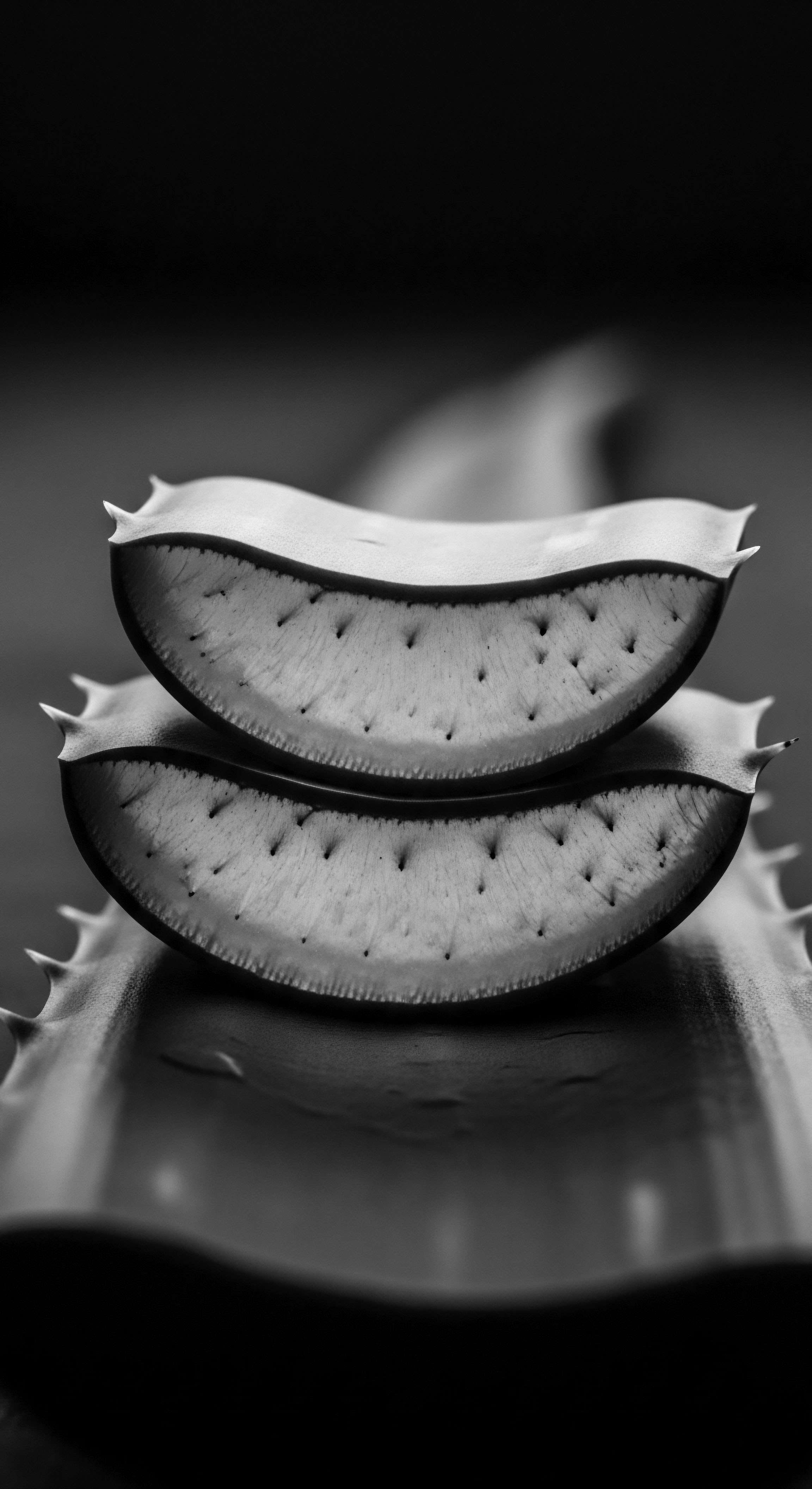
Reflection on the Heritage of Hair Oil Chemistry
As we close this exploration, the profound truth of Hair Oil Chemistry settles within the Soul of a Strand ❉ it is not a sterile scientific concept, but a living testament to ancestral wisdom, enduring resilience, and the inherent beauty of textured hair. The echoes from the source, from the very first pressings of shea nuts in West African villages to the careful infusion of botanicals in Caribbean kitchens, resonate through time, affirming a legacy of profound care. These ancient practices, often dismissed by dominant narratives, held within them an intuitive understanding of the very molecular interactions that modern science now painstakingly unravels.
The tender thread of oiling rituals, passed down through generations, symbolizes far more than just hair maintenance. It speaks to communal bonds, to mothers gently nurturing their children’s crowns, to shared moments of self-care that became acts of resistance and affirmation in the face of erasure. The purposeful application of oils, whether for shine, strength, or scalp health, was a silent language of love and cultural continuity, a way to keep the spirit of a people vibrant through their very strands.
Looking towards the unbound helix of the future, our understanding of Hair Oil Chemistry becomes a bridge—connecting historical reverence with contemporary scientific insight. It empowers us to honor the deep roots of our hair traditions while embracing advancements that further enhance the health and vitality of textured hair. This journey, from elemental biology to embodied identity, reminds us that the care of our hair is a sacred act, a dialogue with our past, and a powerful statement of who we are becoming. The chemistry, then, is not just about what is, but what has always been, and what will continue to be—a source of strength, beauty, and profound connection to our heritage.
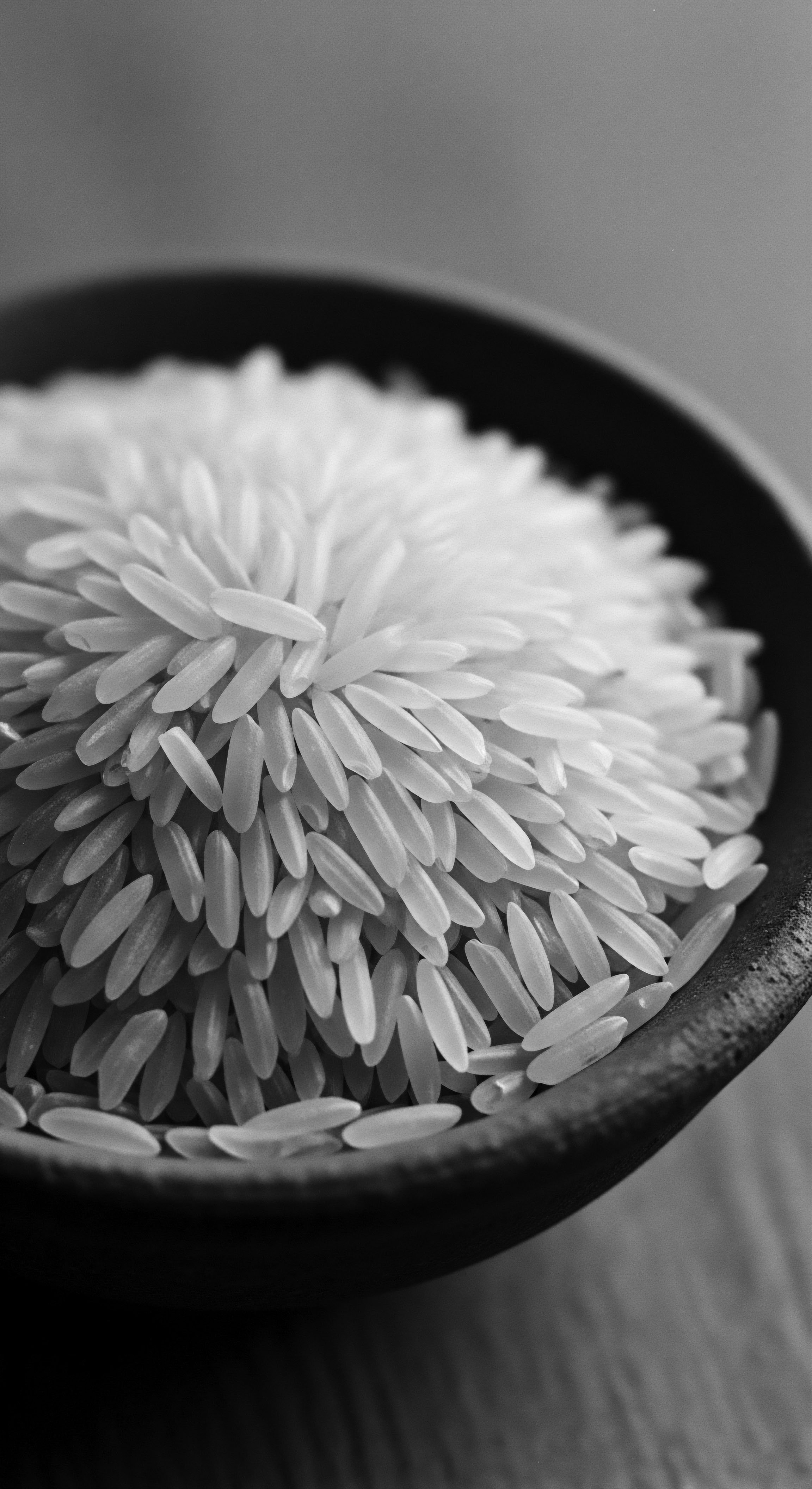
References
- Gavazzoni Dias, M. F. R. (2015). Hair Oils ❉ Indigenous Knowledge Revisited. International Journal of Trichology, 7 (1), 2-10.
- Gouveia, R. M. et al. (2024). Penetration of Vegetable Oils into Textured Hair Fibers ❉ Integrating Molecular Matrix Assisted Laser Desorption Ionization Time-of-Flight Mass Spectroscopy (MALDI TOF/TOF MS) Analysis with Mechanical Measurements. Cosmetics, 11 (1), 20.
- Ayurda. (2024, October 8). Nourish Your Hair ❉ Ancient Practice of Hair Oiling .
- Monoi in the Ancient Days. (n.d.). Monoi in the Ancient Days .
- Ashanti Swimwear. (n.d.). Ghanaian Batana Oil ‘Adwengo’ .
- Lawson, M. (2021, May 27). Are You Really Black? ❉ On Yaba Blay’s “One Drop ❉ Shifting the Lens on Race”. Los Angeles Review of Books.
- Africa Facts Corner. (2024, December 2). The History and Culture of African Natural Hair .
- Kumasi Supermarket. (n.d.). Maa Julie Palm Kernel Oil – 4.5L .
- Ofori-Boateng, C. & Lee, K. T. (2013). Medicinal and Nutritional Benefits from the Shea Tree- (Vitellaria Paradoxa). African Journal of Food Science, 7 (5), 180-185.
- Hairborist. (n.d.). Hair oil treatment ❉ the service that will transform your hair salon! .
- Ataman Kimya. (n.d.). SHEA BUTTER .
- Orifera. (2024, October 13). The History of Coconut Oil and Its Cultural Significance Across the World .
- Brown, B. (2021, March 3). Brené with Dr. Yaba Blay on One Drop ❉ Shifting the Lens on Race. Brene Brown.
- Brown History. (2023, May 11). The Bonding Ritual of Hair Oiling .
- Black Beauty Magazine. (2014, March 14). 3 Haitian Traditional Hair Secrets for Longer Hair .
- Wikipedia. (n.d.). Hair oil .
- Watson, K. (2018, November 27). What Is Shea Butter? 22 Benefits, Uses, and Products to Try. Healthline.
- Chatelaine. (2023, May 8). Hair Oiling Is More Than A Trend—It Connects Me To My South Asian Roots .
- Sheabutter Cottage. (n.d.). PALM KERNEL OIL ❉ unrefined .
- Reddit. (2021, August 26). No raw oils and butters vs. Traditional African hair care? ❉ r/Naturalhair .
- African American Museum of Iowa. (n.d.). History of Hair .
- Orifera. (2024, October 13). The History of Coconut Oil and Its Cultural Significance Across the World .
- New Directions Aromatics. (2017, August 24). Coconut Oil – Benefits & Uses of Coconut Oil for Skin Care & Hair Care .
- Blay, Y. (2021, March 5). Yaba Blay | One Drop ❉ Shifting the Lens on Race. YouTube.
- Brown History. (2023, October 5). Reclaiming the Ancestral Practice of Hair Oiling as South Asians .
- Reddit. (2025, February 27). oil treatment did not significantly improve tensile strength in textured hair .
- Blay, Y. (2022, December 13). Yaba Blay + Zeba Blay ❉ One Drop ❉ Shifting the Lens on Race. YouTube.
- SUTRA EU. (2023, August 22). Ancient Hair Care Tips .
- Wix.com. (2016, May 24). Top 3 Haitian Traditional Secrets For Long Hair .
- Goodreads. (2021, February 16). One Drop ❉ Shifting the Lens on Race by Yaba Blay .
- Akihisa, T. et al. (2010). Characteristics of traditionally processed shea kernels and butter. Journal of the American Oil Chemists’ Society, 87 (2), 173-181.
- OBLOOM – Truu by Nature. (2024, August 21). OILS THAT PENETRATE VS. OILS THAT SEAL THE HAIR .
- Wikipedia. (n.d.). Shea butter .
- Sheabutter Cottage. (n.d.). Palm kernel oil ❉ unrefined .
- Cécred. (2025, April 15). Understanding Hair Oiling ❉ History, Benefits & More .
- Al-Mutairi, N. et al. (2023, November 30). What Every Dermatologist Must Know About the History of Black Hair. Cutis.
- Verywell Health. (2025, April 6). 14 Essential Oils that Promote Faster Hair Growth .
- Pattern Beauty. (2023, November 9). A Deep Dive into Curly Hair Oiling .
- Hairlust. (n.d.). 5 Benefits of Using Oil for Hair & How to Optimize Your Results .
- Singh, A. et al. (2016). Effect of Oil Application, Age, Diet, and Pigmentation on the Tensile Strength and Breaking Point of Hair. International Journal of Trichology, 8 (3), 132-135.
- The Haitian Reporter. (2024, June 19). Unlocking the Secrets of Haitian Black Castor Oil ❉ Traditional Extraction Methods .
- KhalidaNaturals. (n.d.). Pure West African Batana Oil( Palm Kernel Oil) .
- Lewis, A. J. (2019). Examining Afrocentricity and Identity Through the Reemergence and Expression of Natural Hair. Scholar Commons.
- O&3. (2022, July 30). The Best Oils for Textured Hair .
- Mailelani Samoa Body. (n.d.). The Coconut Story .
- Pulse Nigeria. (2019, January 18). Pre-colonial Nigerian cultures ❉ Hairdressing as a work of art .
- NJ.gov. (n.d.). Cultural and Clinical Care for Haitians .
- Afriklens. (2024, November 1). African Hairstyles ❉ Cultural Significance and Legacy .
- Haiti ❉ Exhibition Overview. (n.d.). Everyday Life and Culture in Haiti .
